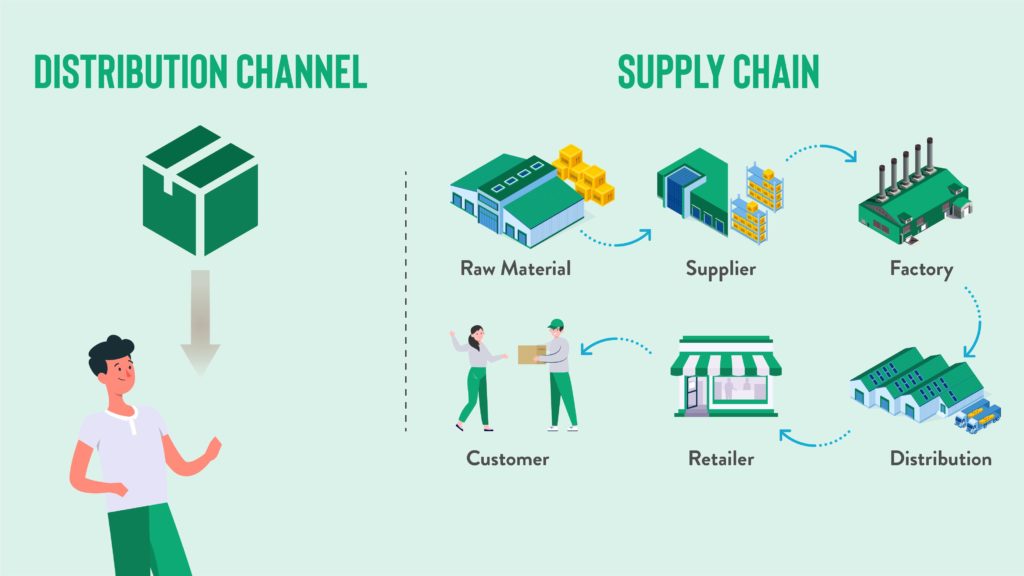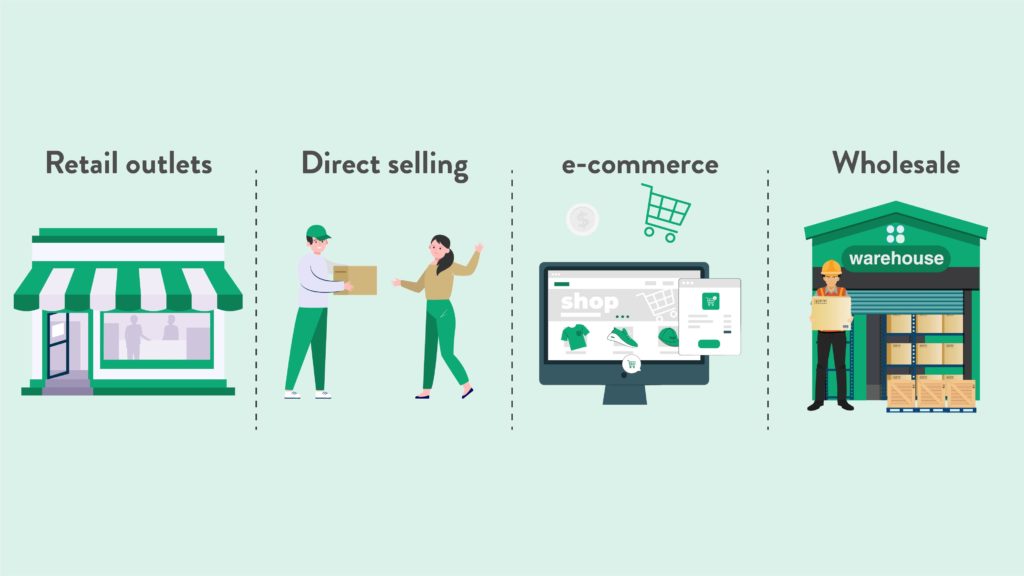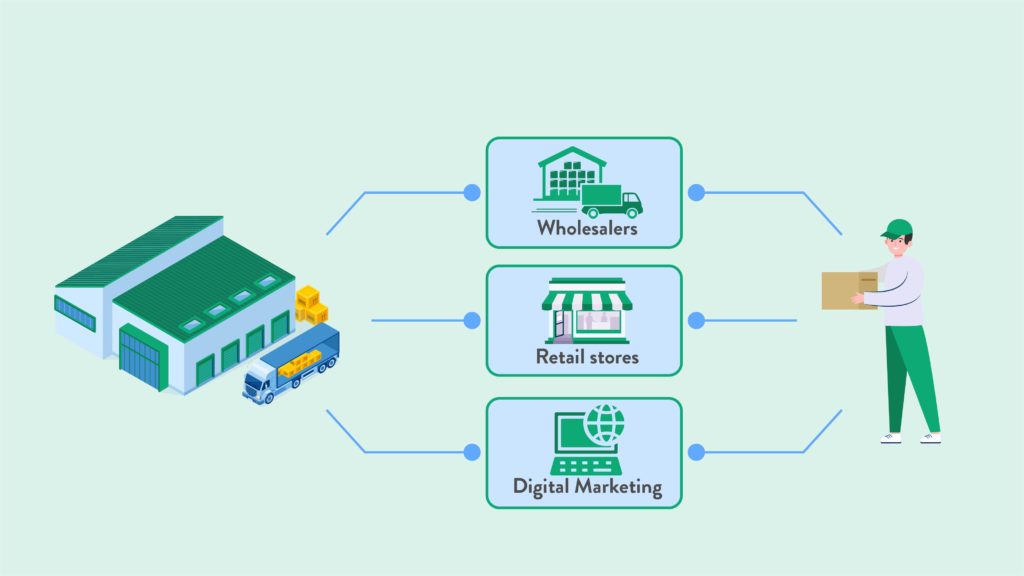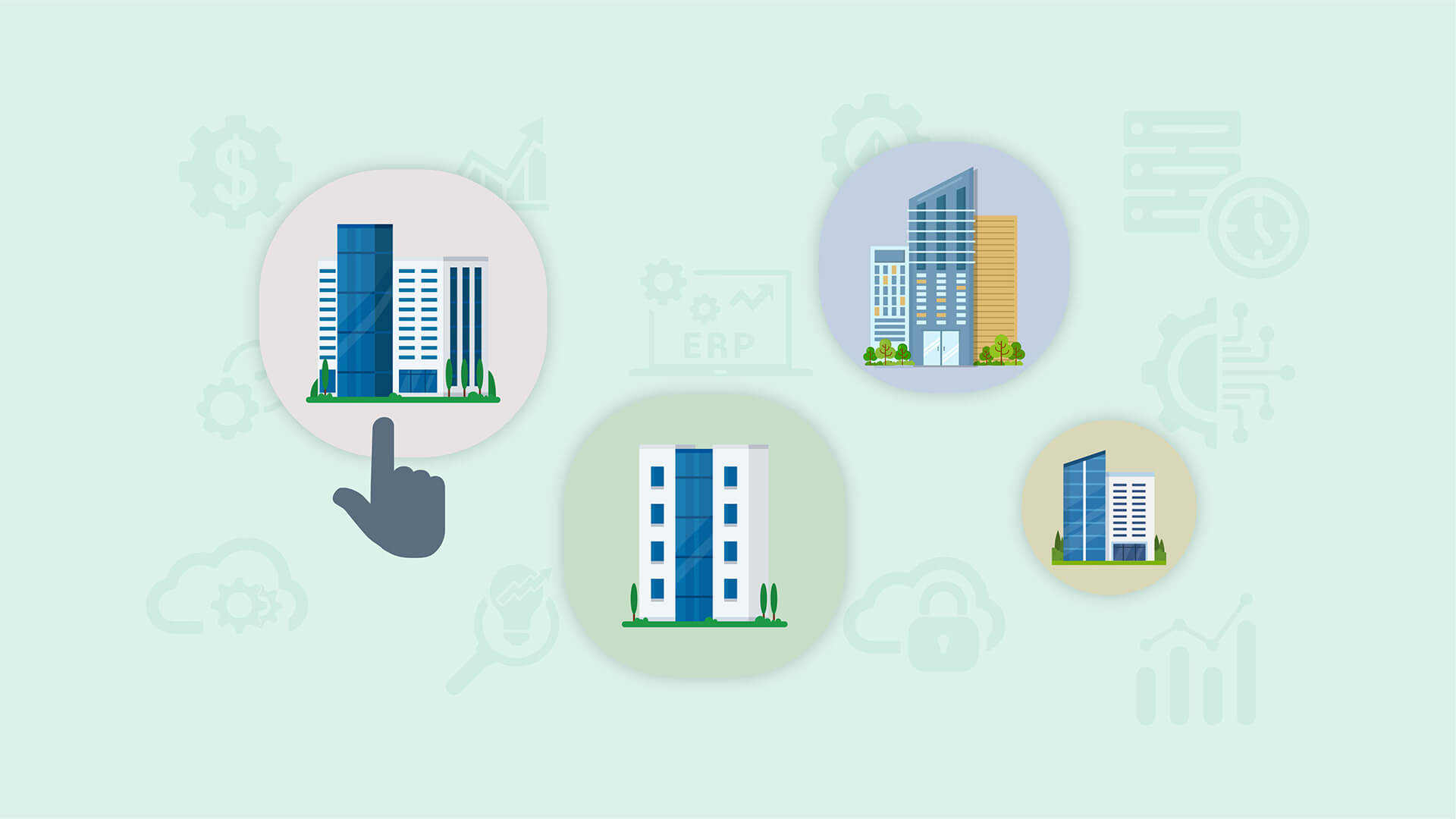For many businesses, their biggest challenge isn’t developing a best-of-breed product but how to promote and sell it to the public. Despite myriad options, finding the right distribution channel remains a challenge. In this article, we’ll discuss the various channels for indirect and direct distribution as part of your company’s strategy, and the pros and cons of each.
What Are Distribution Channels?
Distribution channels are the intermediaries or chain of businesses through which goods or services have to travel until it reaches the end consumer. Examples of distribution channels include wholesalers, retail stores, social media, and the Internet. Distribution channels typically fall under one of two types: direct distribution or indirect distribution.
When a producer sells directly to the end-user through a physical store or website, it’s known as a direct distribution channel. The producer uses an indirect distribution channel when customers buy the product through an intermediary, like a retail store or broker.
Lastly, distribution channels are usually referred to as being long or short. As you’d expect, short channels of distribution have very few steps between the customer and the producer; a long distribution channel has many intermediaries.
What Is the Difference Between Your Distribution Channel Strategy and Supply Chain Management?
While it’s easy to confuse the two terms, there are fundamental differences between distribution strategies and supply chain management. Distribution channels represent a downstream process and answer the question, “How can we get our product to our target audience?” The supply chain is an upstream process that involves sourcing and distributing materials and products through manufacturing and distribution. The final distribution channel to deliver a finished product to the end consumer is often the final stage in your supply chain.

Different Distribution Channels and Their Benefits
There are multiple distribution channels to choose from, and each has its pros and cons. Opting for direct distribution or direct selling seems like the best choice because sharing your profits with intermediaries is no longer necessary. However, that’s not always the case. There could be several factors that make direct channels inefficient or cumbersome for your business, including your internal logistics capabilities, legislation or compliance requirements, or even your geographic location.

Here are a few of the most common types of distribution channels you can choose from:
Retail outlets
Retail stores are still one of the most popular channels of distribution because you gain access to a large customer base with excellent visibility. Unfortunately, you usually can’t approach a retailer directly and instead have to rely on agents or wholesalers if you want a large retailer to stock your wares. The stakes are high, however. Retail stores will not work with businesses that perform poorly or who are unable to deliver large quantities of goods when they need them.
Direct Selling
With direct selling, you cut out the middleman and sell to your customers directly through catalogs, cold calling, sales teams, or pop-up shops. Direct selling gives you greater control over customer satisfaction, positioning, and messaging, but it requires a lot of resources and effort. If you don’t have access to a large sales team or delivery network, you can outsource these functions to a dealer network. This adds some complexity as you’ll need to provide some training, marketing collateral, and, of course, manage commissions and fees.
E-Commerce Stores
E-commerce is one of the most common direct distribution channels you can use today. This channel uses inbound marketing and digital distribution techniques to lower prices and go-to-market costs, but competition is steep and visibility low. It also requires some technical expertise to maintain and manage. If you don’t want to build your site (and the traffic required), you can always use online markets like Amazon, Zappos, or eBay. They do take hefty fees from customers, but you don’t need to invest heavily in SEO or shipping.
Wholesale Distribution
Long, indirect distribution channels have several advantages. Wholesalers purchase large quantities of goods in bulk and fulfill orders from retailers, similar to distribution partners and agents. You can share shipping and storage costs and benefit from your third-party’s experience, salesforce, and infrastructure. Because products are distributed to an established network of retailers, it makes it easier for customers to find your products.
Choosing the Right Software For Your Distribution Channels
Once you’ve chosen the distribution channel that best suits your business, you need to establish which software applications fit your operational demands. If the recent COVID-19 pandemic taught us anything, it’s that less elastic distribution channels and chains struggled to deal with disruption. The recent war in Ukraine, along with its impact on raw materials and components, is another good example of why it’s important to remain flexible. Those that had set up flexible channels were able to maintain a high standard of delivery and productivity, growing their businesses and seizing new opportunities.
When you pick a distribution channel, you have to make sure that the technology provider you choose is equally resilient and flexible. Who you will sell to, and how, will make a huge difference in the types of technology you’ll need to use and how sales are handled. Your customers and partners may already have existing touchpoints in their own distribution process mix, which will also need to be taken into account.
The business model and your growth ambition will also impact the software you use. If you are a small company with minimal distribution channels, you could probably get away with function-specific solutions for inventory management and accounting. Once your customer base grows, and you start adopting multiple distribution channels, you’ll need to invest in an ERP system to protect each inventory cycle.

Conclusion
Your distribution strategy will significantly impact all aspects of your business, including inventory management, customer satisfaction, sales, and profitability. Distribution channels must be managed and monitored carefully and remain agile to ensure that your business can compete, even in the face of significant disruption.
If you’d like to learn more about selecting the right technology solution for your mix of distribution channels, speak to us at 10X ERP. Our modern, user-friendly wholesale distribution ERP provides a foundation for your distribution business to scale efficiently no matter what unique strategy and needs you employ.
